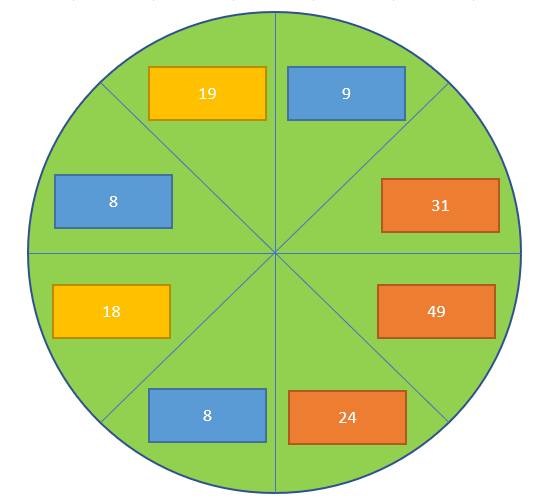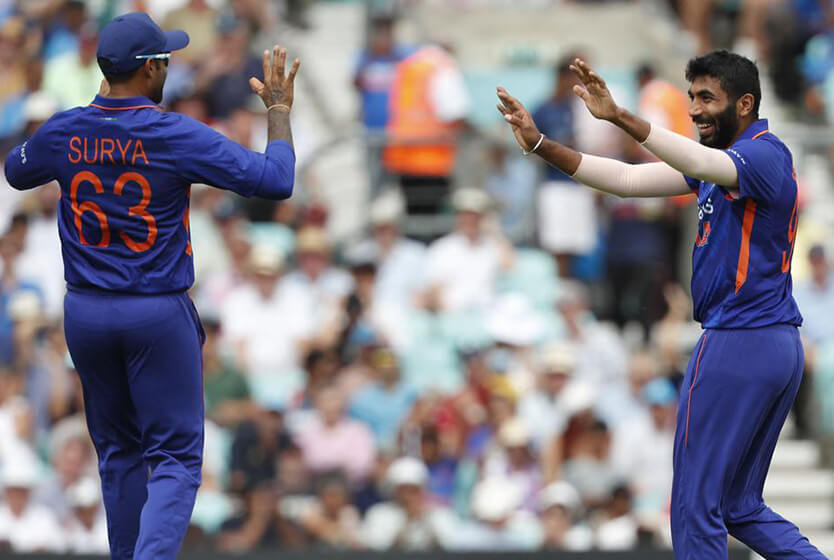
The Mohammad Haris Project: A Race Against Time
A quick-fire rise for the firebrand cricketer from Peshawar, but is it too soon?
The disparity of difficulty batting in the top order as opposed to the middle-lower order in ODI cricket is perhaps greater than in any other format. As a Top Three batsman in ODI cricket, your base requirements are to survive the new ball spell and then not do anything silly while playing at a decent rate for 25 odd overs. Everyone else in the batting order has their tone set by the performance of the Top Three. A middle-order batsman has to be prepared for every situation in ODI cricket: they could be walking in in the 1st over or the 45th, and they should be able to deliver accordingly. In T20 cricket, if a middle-order batsman walks in early, he need only delay his launch schedule by a few overs. In Tests, you pretty much bat the same in 95% of situations – go out there and survive.
Thus, the uniqueness of ODI middle-order batting is such that nothing really prepares you for it except the experience of performing that role time and time again. It is why great ODI middle-order batters of our times have had middling starts to their international careers as they figured out how to tune their game to suit the requirements of ODI cricket. It is why Pakistan would have perhaps been better off picking players with extensive domestic experience of performing this role with the World Cup being one year away and it being very unlikely that they could groom a player in that role from scratch, a project that could’ve been left for post-2023. But, Pakistan being Pakistan, did what Pakistan does.
Rise to Fame
Mohammad Haris didn’t manage to impress in the two initial domestic One-Day tournaments he played as an Under-19 player. He played 13 matches for 263 runs at an average of 29 and a strike rate of 75. The tournament where he announced his arrival on the domestic circuit was the Inter-Region U19 Three Day Tournament. A three-day tournament is played to test the first-class skills of U19 players; the SRs seen are similar to those of Test or First-Class games. Clearly, Haris didn’t get the memo as he not only finished as the eighth-highest run-scorer at an average of 60 but also did it at SR of 92, the highest for any player with a minimum of 200 runs.
But perhaps even that does not purely illustrate Haris’ promise. For that, we could look at the fact that on the U19 tour of South Africa, Pakistan decided to abandon the archaic notion that only one wicket-keeper batsman can play in an XI, playing both Haris and Rohail Nazir. It was so abundantly obvious to anyone watching that this lad was among the top six U19 batters in the country, wicket-keeper or not.
Haris finished his U19 career with the third highest SR of all time, accompanied by a healthy average of 53. He made the No.6 position his own, scoring 300 runs there at an average of 75 and an SR of 118. U19 promise does not always transform into international excellence, but only five to six players in the top 20 SRs list are virtually unknown; others have had varying degrees of success.
Highest Strike Rates in Youth ODIs (Minimum 500 Runs)
| Player | Team | Span | Inns | Runs | HS | Avg | SR | 100 | 50 |
| James Price | South Africa | 2010-2011 | 13 | 515 | 135 | 46.8 | 121 | 1 | 2 |
| Gaurav Dhiman | India | 2004-2006 | 22 | 837 | 121 | 49.2 | 115 | 3 | 3 |
| Mohammad Haris | Pakistan | 2019-2020 | 15 | 531 | 81 | 53.1 | 109 | 0 | 5 |
| Shubman Gill | India | 2016-2018 | 15 | 1149 | 160 | 104.5 | 103 | 4 | 6 |
| Tanzid Hasan | Bangladesh | 2018-2020 | 33 | 1018 | 117 | 30.8 | 103 | 1 | 8 |
| Sarfaraz Khan | India | 2013-2016 | 30 | 1080 | 101 | 51.4 | 102 | 1 | 11 |
| Kamran Ghulam | Pakistan | 2013-2014 | 16 | 586 | 102* | 48.8 | 101 | 2 | 5 |
| Finn Allen | New Zealand | 2016-2018 | 17 | 663 | 115* | 47.4 | 101 | 1 | 3 |
| Dan Lawrence | England | 2015-2016 | 14 | 712 | 174 | 50.9 | 100 | 3 | 4 |
| Tamim Iqbal | Bangladesh | 2005-2007 | 19 | 590 | 112 | 32.8 | 100 | 1 | 3 |
| Bhanuka Rajapaksa | Sri Lanka | 2009-2011 | 33 | 1040 | 154* | 35.9 | 100 | 2 | 3 |
| Bryce Parsons | South Africa | 2019-2020 | 19 | 704 | 121 | 39.1 | 99 | 1 | 5 |
| Quinton de Kock | South Africa | 2010-2012 | 30 | 1409 | 146 | 48.6 | 99 | 4 | 7 |
| Prithvi Shaw | India | 2016-2018 | 15 | 622 | 105 | 44.4 | 97 | 1 | 3 |
| Harry Brook | England | 2017-2018 | 17 | 591 | 102* | 45.5 | 95 | 1 | 5 |
| Shakib Al Hasan | Bangladesh | 2005-2006 | 18 | 563 | 100 | 35.2 | 94 | 1 | 3 |
| Sandun Weerakkody | Sri Lanka | 2011-2013 | 18 | 703 | 112* | 43.9 | 94 | 1 | 6 |
| Shikhar Dhawan | India | 2004-2004 | 7 | 505 | 155* | 84.2 | 94 | 3 | 1 |
| Vishva Chathuranga | Sri Lanka | 2016-2017 | 19 | 622 | 103 | 32.7 | 93 | 1 | 2 |
| Haider Ali | Pakistan | 2019-2020 | 18 | 655 | 116 | 38.5 | 93 | 1 | 6 |
National T20 Cup and PSL
Haris’ first introduction to first XI domestic cricket was the National T20 Cup 2020. He started out in the lower order but was then promoted to opening, where he struck 79*, but it was off 70 balls. It was a tough pitch where only one other batsman crossed 22 in the entire game. Nevertheless, it showcased that there was still a way to go before he would have the power and range to succeed consistently at the domestic level. There were some eye-catching shots, such as a sweep off Mohammad Amir and a scoop off Mohammad Musa. These were the shots that captured the imagination of all those who have watched Haris play since youth cricket. It is rare to find a Pakistan batsman with range behind the wicket.
A couple of years later, Haris found himself opening for Peshawar Zalmi with a clear debrief: 60-meter boundaries and only two fielders outside the circle – express yourself. And express himself he did, finishing in league with professional powerplay bashers such as Stirling, Gurbaz, and Roy. This was a vastly different role from any he had played in cricket thus far, but it is among the easier debriefs you can give to a batsman, especially one who is as hell-bent on playing as fast as possible as Haris is. The problems with range are masked with two fielders outside the circle. Similarly, that helps with power, too. You need only clear the inner circle, and after all that, the boundaries are 60 meters. This was Haris as U19 bowlers had seen him – a one-man wrecking machine.
Powerplay Batters in PSL 7
| Batsman | Avg | SR | 4s | 6s |
| Rahmanullah Gurbaz | 27.8 | 198 | 8 | 10 |
| Paul Stirling | 57.3 | 191 | 23 | 9 |
| Jason Roy | 59.7 | 190 | 30 | 5 |
| Mohammad Haris | 66.5 | 187 | 17 | 6 |
| Fakhar Zaman | 63.8 | 152 | 36 | 4 |
| Alex Hales | 66.0 | 151 | 29 | 6 |
| Kamran Akmal | 48.5 | 137 | 11 | 3 |
| Ahsan Ali | 37.8 | 135 | 23 | 3 |
| Will Smeed | 31.0 | 131 | 15 | 2 |
| Shan Masood | 50.8 | 131 | 35 | 3 |
Haris prefers to attack the square leg to midwicket area, which is normal for most batsmen looking to hit as many boundaries, but we also observed this leg-side dominance in his National T20 innings as well. His favorite shot on the off side is the run down to third man, followed by backing away from his stumps and going inside out over the infield. As with most Powerplay bashers, he fizzles out after the Powerplay, with his middle-overs numbers reading as 33 runs, 3 dismissals, and an average of 11.
Pakistan Cup
The Pakistan Cup is the most marginalized first XI domestic competition in Pakistan’s yearly cricket calendar. It’s usually played at the end of the season, where pitches widely vary in quality, and player availability is affected by injuries and international teams touring. As of now, it can not be seen alone as the basis for selection; players need to either show their explosiveness in the PSL or their durability in the Quaid-e-Azam Trophy.
Haris is currently among the finer middle-order batters playing the Pakistan Cup, but he hasn’t separated himself from the crop in such a way that demands selection. He has been KP’s insurance policy at 6/7, and while his season numbers from 2020 may have been better, the pitches were harder to bat on in 2021, and he wasn’t surrounded by as many quality batsmen. A few more seasons of performing this role for KP, and he would’ve been ready to take the next step.
Middle-Order Batters in Pakistan Cup 2021-22
| Batsman | Inns | Runs | Avg | SR | BpB | 100s | 50s |
| Qasim Akram | 18 | 707 | 50.5 | 95.7 | 9.9 | 1 | 5 |
| Adil Amin | 17 | 694 | 46.3 | 104.5 | 9.0 | 1 | 5 |
| Saad Nasim | 18 | 668 | 41.8 | 97.0 | 10.6 | 1 | 4 |
| Danish Aziz | 15 | 537 | 59.7 | 78.1 | 12.1 | 1 | 2 |
| Ayaz Tasawar | 15 | 516 | 46.9 | 84.7 | 10.5 | 0 | 4 |
| Mohammad Haris | 15 | 508 | 39.1 | 101.4 | 7.8 | 1 | 3 |
| Hammad Azam | 10 | 424 | 47.1 | 124.3 | 7.6 | 0 | 2 |
| Rohail Nazir | 11 | 383 | 38.3 | 89.5 | 9.7 | 0 | 3 |
| Azam Khan | 11 | 367 | 36.7 | 131.1 | 5.4 | 0 | 2 |
| Asif Ali | 8 | 341 | 48.7 | 135.3 | 4.8 | 1 | 2 |
Mohammad Haris Positional Breakdown in List A Cricket
| Pos | Inns | Runs | 100s | 50s | Avg | SR |
| 5 | 4 | 35 | 0 | 0 | 8.8 | 116.7 |
| 6 | 11 | 246 | 0 | 1 | 27.3 | 91.1 |
| 7 | 3 | 243 | 1 | 2 | 81.0 | 115.7 |
Wrap Up
Mohammad Haris is an excellent choice for backup wicket-keeper in ODIs; he has shown promise in U19s, is being groomed for the middle order role in domestic cricket, and has taken the PSL by storm. He is among the finest batting talents Pakistan has produced in the past few years, and that does not even take into account that he keeps wickets. The selectors have misconstrued his PSL performances in a different role as readiness for the next step. The worst thing to do as of now would be to put him in the comfort zone of opening. He is destined to be a Maserati, and you do not take your Maserati for grocery shopping.
Please, Pakistan, you do not find attacking wicket-keeper batsmen often; try to be polite. Now that he has been given the impossible task of getting ready for the biggest world cricketing event of the last four years, back him to the hilt. If this comes off, your ODI team will thank you five years down the line. But if it fails, good luck shifting your middle-order keeper down to No.9 every time the required rate rises above eight runs an over. There can be no mistakes.








Leave a Reply